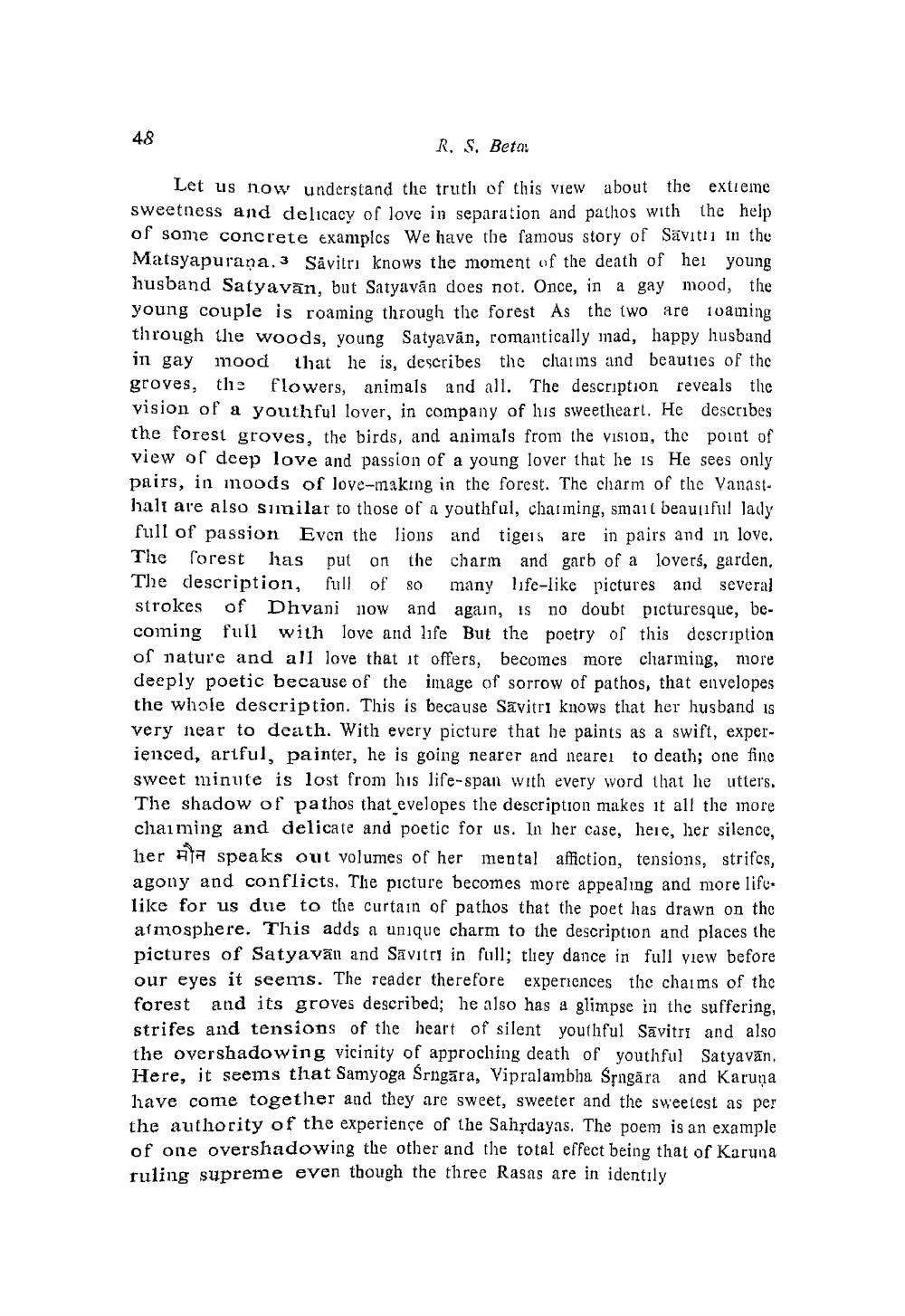________________
48
R. S. Beta:
Let us now understand the truth of this view about the extreme sweetness and delicacy of love in separation and pathos with the help of some concrete examples We have the famous story of Sävitti in the Matsyapurana.3 Sävitrı knows the moment of the death of her young husband Satyavān, but Satyavān does not. Once, in a gay mood, the young couple is roaming through the forest As the two are 10aming through the woods, young Satyavān, romantically mad, happy husband in gay mood that he is, describes the claims and beauties of the groves, the flowers, animals and all. The description reveals the vision of a youthful lover, in company of his sweetheart. He describes the forest groves, the birds, and animals from the vision, the point of view or deep love and passion of a young lover that he is He sees only pairs, in moods of love-making in the forest. The charm of the Vanasthali are also similar to those of a youthful, charming, smail beauniful lady full of passion Even the lions and tigers are in pairs and in love. The forest has put on the charm and garb of a lovers, garden, The description, full of so many life-like pictures and several strokes of Dhvani now and again, is no doubt picturesque, becoming full with love and life But the poetry of this description of nature and all love that it offers, becomes more charming, more deeply poetic because of the image of sorrow of pathos, that envelopes the whole description. This is because Savitri knows that her husband is very near to death. With every picture that he paints as a swift, experienced, artful, painter, he is going nearer and nearer to death; one fine sweet minute is lost from his life-span with every word that he utters. The shadow of pathos that evelopes the description makes it all the inore chaiming and delicate and poetic for us. In her case, here, her silence, her a speaks out volumes of her mental affiction, tensions, strifes, agony and conflicts. The picture becomes more appealing and more lifelike for us due to the curtain of pathos that the poet has drawn on the armosphere. This adds a unique charm to the description and places the pictures of Satyavān and Savitri in full; tliey dance in full view before our eyes it seems. The reader therefore experiences the charms of the forest and its groves described; he also has a glimpse in the suffering, strifes and tensions of the heart of silent youthful Savitri and also the overshadowing vicinity of approching death of youthful Satyavān. Here, it seems that Samyoga Srngāra, Vipralambha Srngāra and Karuņa have come together and they are sweet, sweeter and the sweetest as per the authority of the experience of the Sahşdayas. The poem is an example of one overshadowing the other and the total effect being that of Karuna ruling supreme even though the three Rasas are in identily




